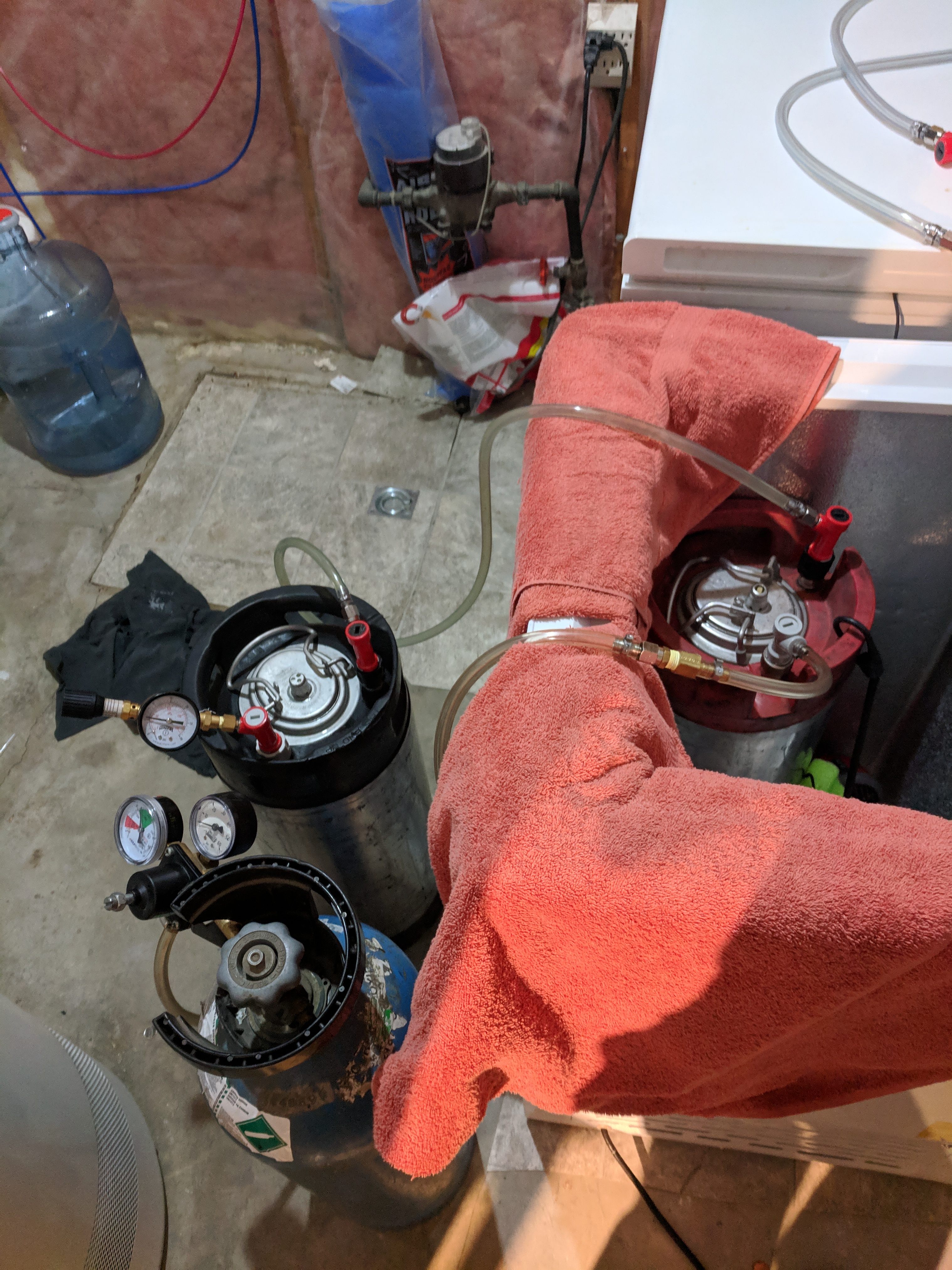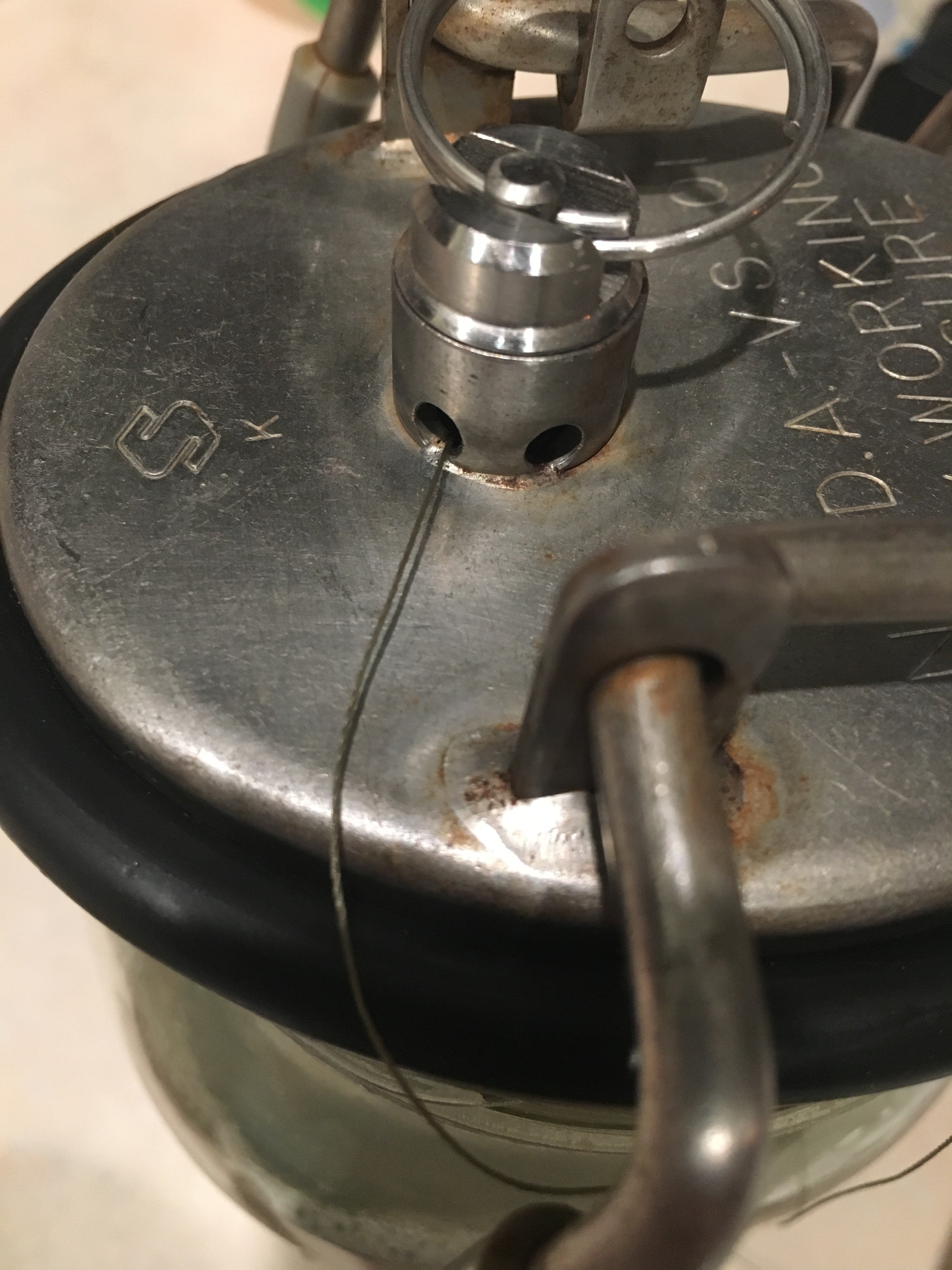I posted this in another thread, thinking that thread was this one.
Anyway, here’s the repost:
Got a plan for dry hopping in the fermentation keg. Put it into play yesterday.
Sanitized a hop sock and some thin nylon thread in a jar of starsan.
Filled sock with dry hop charge (and a stainless bar for weight) and tied it off with the thread.
After pitching yeast into keg, I seal it up and pressurize with pure O2, shake it up for a while then vent.
Now I removed the safety valve, removed the lid and fed the thread through the safety valve opening, then reinstalled the safety valve.
I only let the bag down far enough to hang in the air above the beer.
Once fermentation is done, I will quickly pull the safety valve ring, allowing the hop sock to fall to the bottom.
It worked perfectly during the dry runs.
The thread is thin enough that the valve still holds pressure just fine.
Just have to remember to sanitize the thread again (or cut it) before pulling the ring.
















![Craft A Brew - Safale S-04 Dry Yeast - Fermentis - English Ale Dry Yeast - For English and American Ales and Hard Apple Ciders - Ingredients for Home Brewing - Beer Making Supplies - [1 Pack]](https://m.media-amazon.com/images/I/41fVGNh6JfL._SL500_.jpg)





































